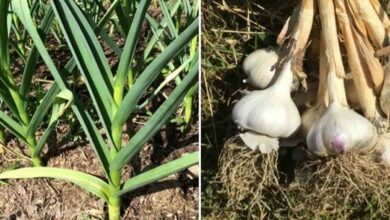Crop Safety: Adopt these measures to save crops from cold wave and frost
Crop Safety: Cold waves and frost often have an impact on farmers’ crops. In light of this, the Bihar government’s Agriculture Department has released advice to guard against cold wave/frost-related crop damage. Farmers may minimize frost damage and guarantee crop safety by adhering to certain regulatory regulations. The Agriculture Department’s recommendations have the potential to boost crop yields and improve farmers’ financial circumstances.

The dew droplets create an ice sheet when the atmospheric water vapor comes into touch with the leaves of plants and trees or any other solid surface when the temperature drops to 4 °C or below. We call this frost. It has the potential to seriously harm crops.
Steps to protect crops from freezing temperatures
Do not till the soil:
On days when frost is anticipated, avoid plows and tills. By doing this, the soil’s temperature might drop even more, increasing the crop’s vulnerability to frost.
Apply a little irrigation:
Light watering should be applied to the crops if frost is a risk. By doing this, the crops will be protected and the temperature won’t drop below 4°C.
Apply sulfur spray:
Mix three grams of soluble sulfur (80% WP) with one liter of water, then mist. The plants will be heated as a result, protecting them from the damaging effects of frost.
Create smoke:
In the evening, create smoke by burning straw and grass in all four fields. This maintains a constant temperature and stops the frost from falling directly on the crops.
Put a lid on the plants:
Use straw, polythene, or another material to cover vegetables in the nursery, such as onions, tomatoes, brinjal, and chillies. To allow the plants to get morning sunshine, keep the southeast portion of the plants open. Till February, use straw.
Apply a fungicide:
Protection from blight is as important as frost protection. The fungus that causes blight spreads quickly.
Apply any of the fungicides listed below seven days apart:
75% of Mancozeb
Mancozeb 63% + Carbendazim 12%
Zineb 75%
Mancozeb 64% + Metalaxyl M 4%
Mix two to three grams of these medications with one liter of water, then mist the crops with the mixture.
Get in touch for further details
For further information, farmer brothers and sisters are encouraged to speak with the Assistant Director, Plant Protection, in their area or call the Kisan Call Center (toll-free 1800-180-1551).





